A PARTICIPATORY APPROACH TO FACILITATE AN INCREMENTAL GROWTH OF POST NATURAL-DISASTER HOUSING AT BOTH UNIT AND SETTLEMENT LEVEL
Introduction:
In this essay, post natural disaster housing will be discussed on its two important aspects, namely the incremental aspect and the participatory aspect. Historically, these two concepts have been hooked up with housing design for an extended period. To define incrementality, it does not necessarily imply an increment in mass, instead, most of the time the phrase is being referred to as increment of time. Therefore, incrementality in housing can be understood as changes occur in the physical structure over time. Incrementality is also the nature of a physical structure, from the explanation given by architectural theorists on this concept shows that different strategies have been applied as early as the design stage to ensure that the architecture increment in a manner that is beneficial to the inhabitants, and therefore it can be said that the ground zero state is not denoted by the completion of the initial structure. Participation is a means in which the physical structure could be changed, and as well as a means to achieve a changeable structure. It is very useful to look at the way major advocators attempted to systematize the implementation of these two concepts into housing design and how the two concepts mutually reinforced each other. It is found that even though some of the proposals has transverse over time into topics that are still being vigorously debated in the present days, their process of developing into such system are highly contextualized and therefore it is hypothesized that framing the two concepts on a present days Anthropocene scenario, characterized by more frequent occurrence of mega disaster in densely populated urban context, will foster the mutation of these two concepts into a new form of expression.
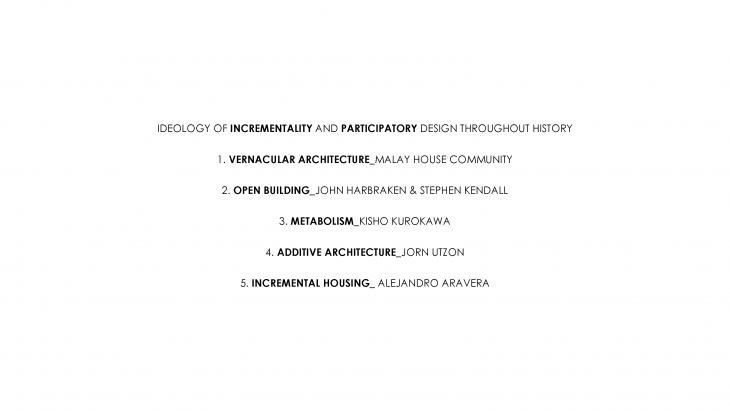
Contextualization Of Incremental And Participatory Concept
Regardless of not yet being recognized as terminologies people commonly used, the incremental and participatory concept have been practiced in vernacular architecture. Malay house is a typology that indigenous people of Malay Peninsula commonly lived in before the influence of modern movement reached that region. Since the country has undergone higher degrees of industrialization, Malay houses are gradually being replaced by more durable construction and more importantly, the traditional skills of constructing Malay houses, which is found in the still existing documentation to be more incremental than the industrially produced housing (Khor & Lim, 2001), has struggled to survive. As the modern movement completely transformed the building landscape and the uniformity of architecture, in particular, housing has raised widespread criticism, Dutch architect and theorist John Habraken has proposed the concept of Open Building. The principle is initially contextualized into the Netherlands due to the phenomenon that the majority of the houses people lived in are acquired by rent. This causes housing stock eligible for unit-by-unit renovation (Kendall, 2002). The principle of Open Building gave rise to a building system that is compatible to tenants moving in and out and constantly needing to renovate a certain part of the apartment at different instances. Later this concept is found scalable to many other contexts for producing a more habitable environment. On the other end of the world, while Japanese architects are intensively searching for ways to promptly reshape cities destroyed during WWII, the idea of Metabolism has gained its exposure through the Tokyo World Design Conference. Followed by a series of physicalization and theoretical debate in both the urban and architectural level called the Metabolic Movement, it is clear that the manifesto by the Metabolism group is deeply characterized by Japanese culture of urban mobility, unification of classes and the ephemeral nature that materiality has suggest them (Kurokawa, 1977). This also led to the separation from the Modernist stream of some Japanese architects originally well-known for practicing Modernism in their works. Not long later Danish Architect jorn Utzon, who has also visited Japan and influenced by the oriental architectural style has summarized his works with a term called Additive Architecture. Utzon’s observation in oriental architecture has inspired him to reflect upon structure of elements in nature and concluded that richness can be created by arrangement of numerous identical units. Motivated by the variation that the additive approach could possibly give, the architect continued to pursue the design of changeable housing to cope with natural changes that lives encounter (Utzon, 2009). It is worth highlighting that changes being discussed in this study, in other words, extreme climatic conditions, does not belong to the category of natural changes and it suggests that the aforementioned principles may not be completely valid in terms of meeting the needs brought by such acute changes. Contextually speaking, the last existing theory that is being discussed here is developed under a more similar condition which is the provision of safe and affordable housing to slums and regions hit by earthquakes. Incremental housing is a more recent concept comparative to the previously discussed concepts and yet it inherits many fundamental principles of the three. Incremental housing concept is challenging the existing framework to cope with the problem that a large part of the community does not have sufficient resources to afford a basic living standard. The term incrementality is also borrowed from incremental housing because of the similarity in their core belief. Nevertheless, the difference between the incrementality being proposed in this argument and Alejandro Aravera’s original idea will be discussed in the later sections.
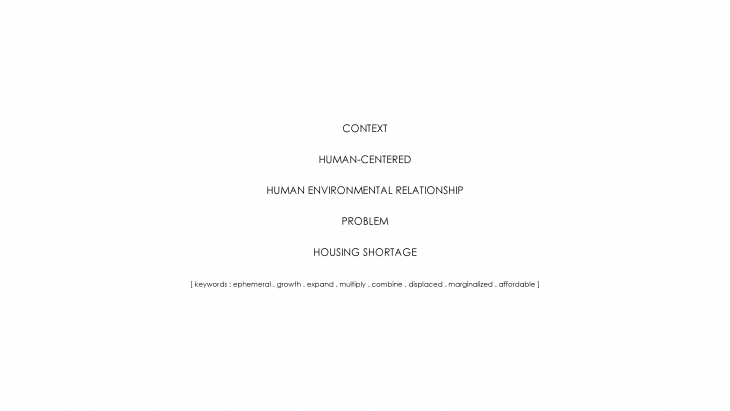
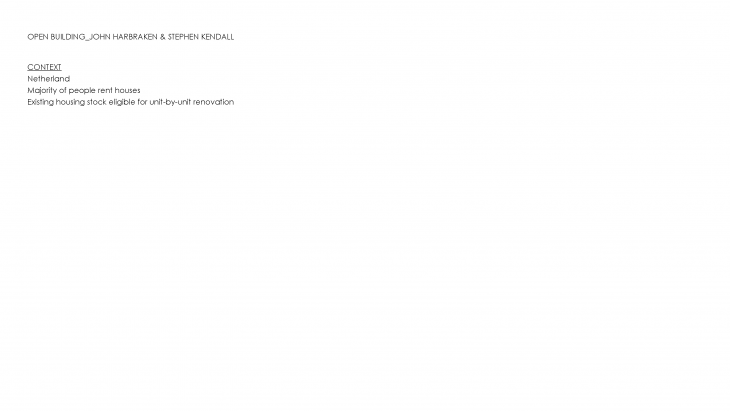
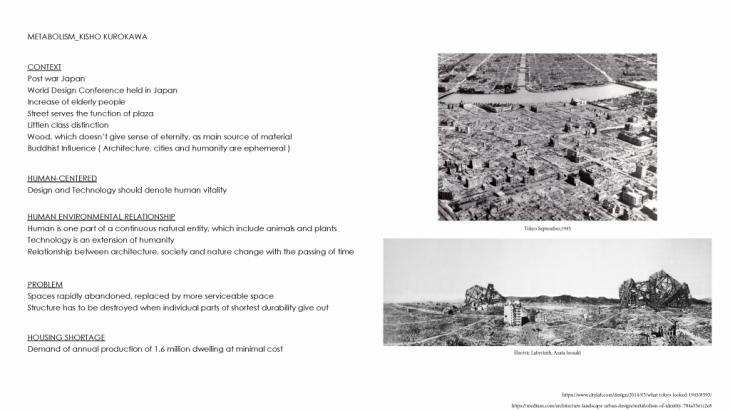
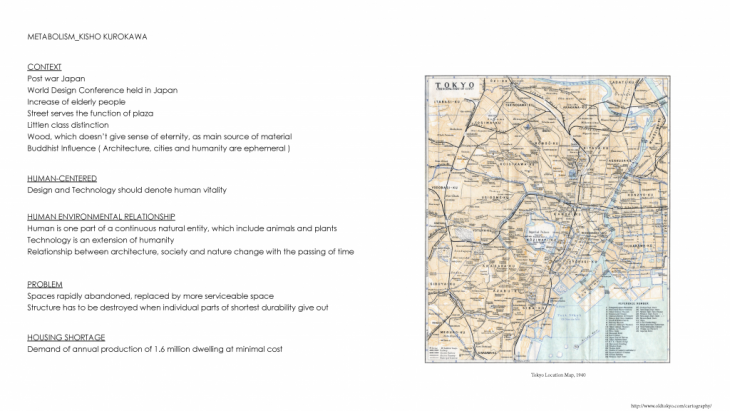
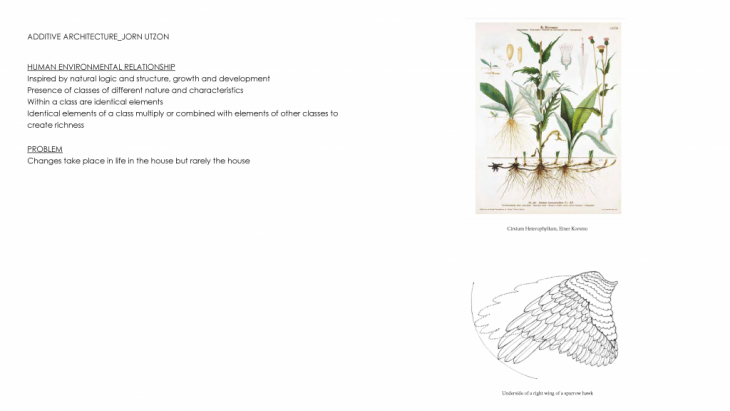
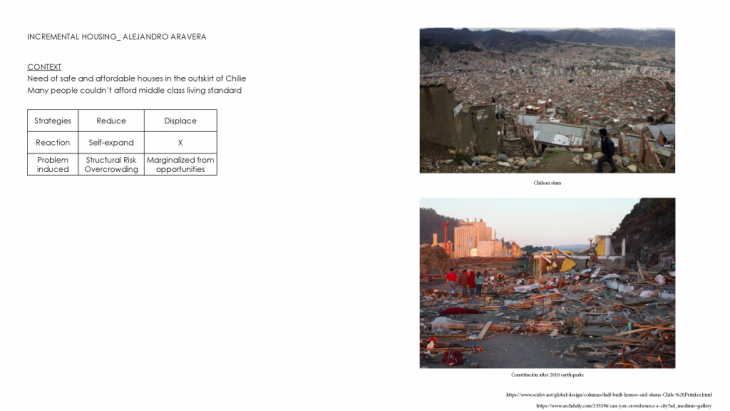
Comparison Between Housing As Plug-In System And Housing As Additive System
Apart from the contextual influence, another criterion that leads to a diverse elaboration between these concepts is what housing is being perceived as. This perception of housing can be realized by subdivision of the housing as an entirety into components with different cycles. A basic unit is an interface to which various systems can interact with each other. It is observed that the form housing is being compared to is indivisible from the context it is situated in, and this context has a trend with respect to time that in the pre-modern age housing is seen as a physicalization of the household activities derived more apparently from survival, and after the capitalist regime, it is more related to preferences and choices under the strong influence of consumerism, up till a point in time, which humanity has anticipate a risk of resource depletion and housing become an objective-driven process to combat resource scarcity. Two mainstream approaches, plug-in and pure additive have been adopted, each for its own strength. Plug-in is more scalable to be adopted in megastructure with its flexibility to grow vertically. Pure additive approach on the other hand gives its element more autonomy due to its non-hierarchical nature. Incremental housing is a hybridization of the two, having an additive expression with the action of fill-in being permitted in the system.
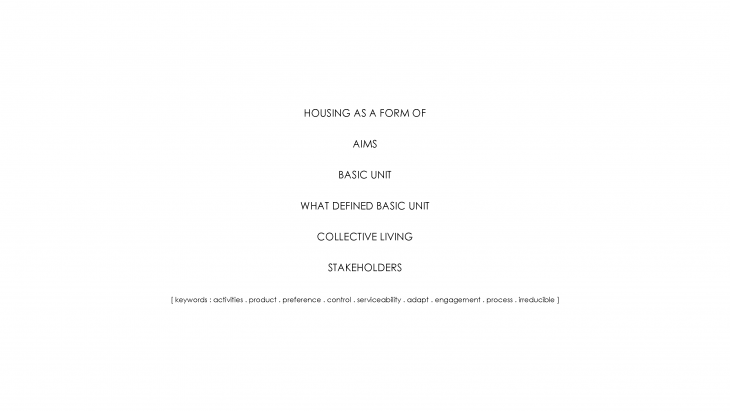
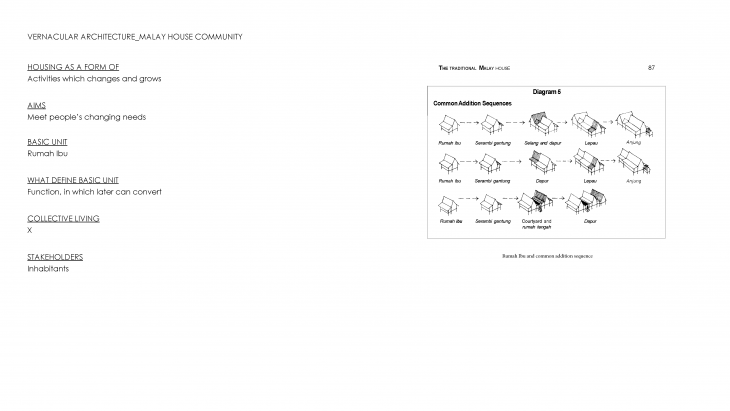
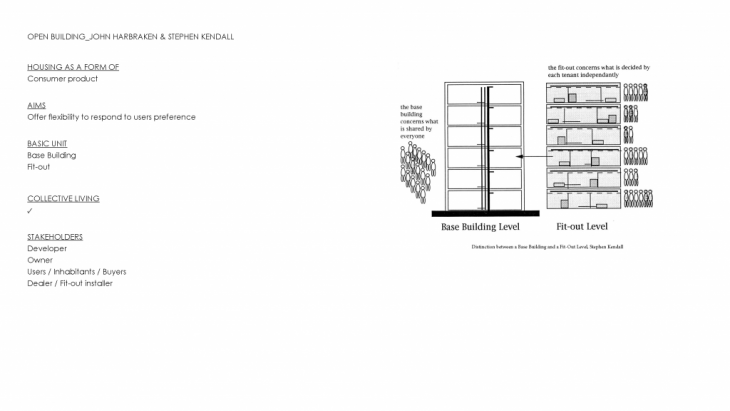
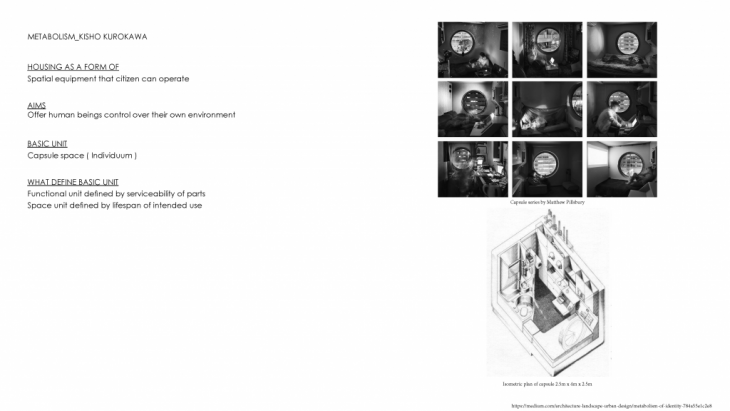
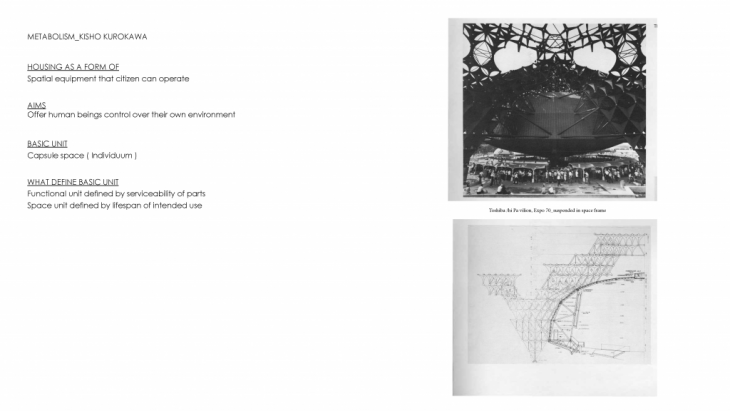
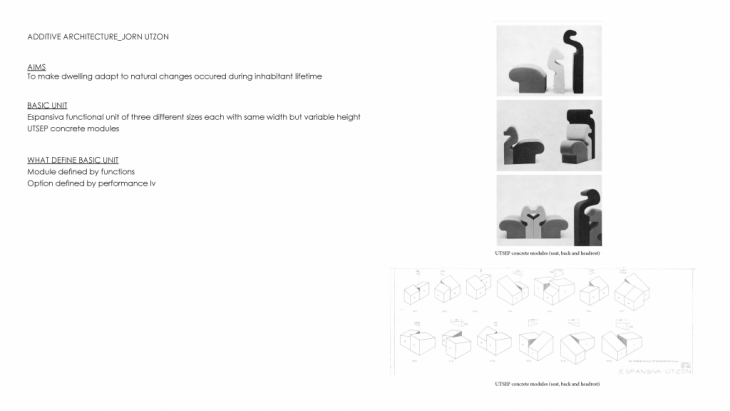
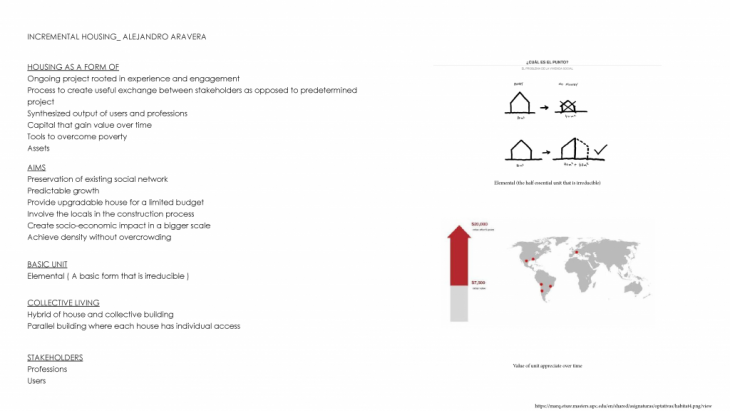
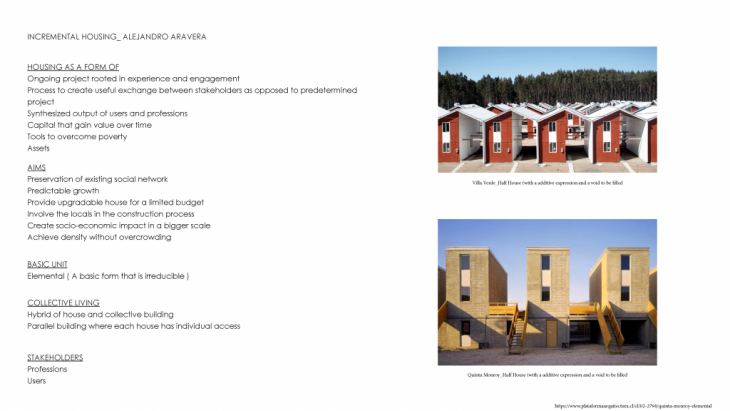
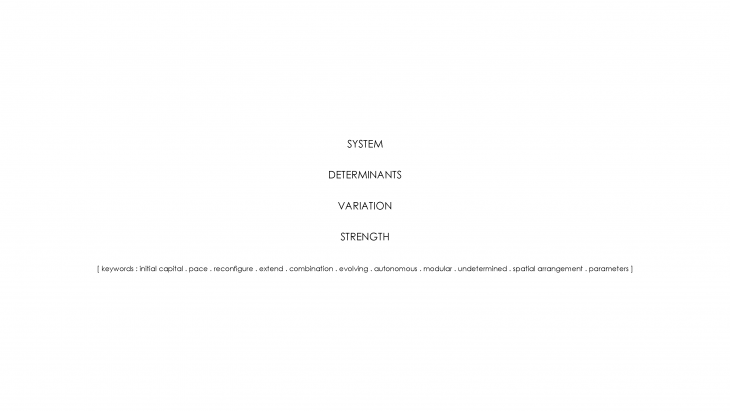
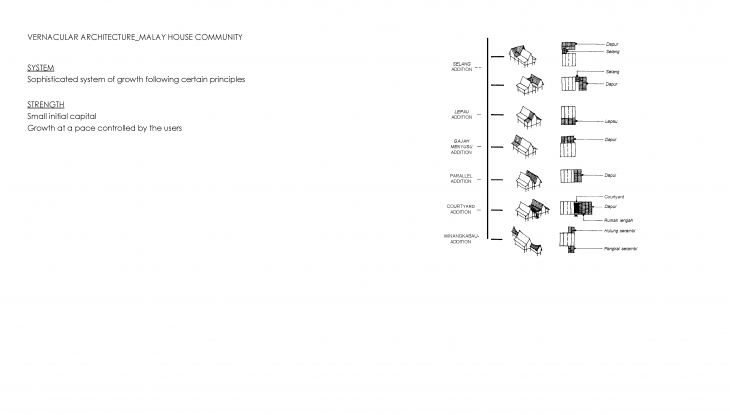
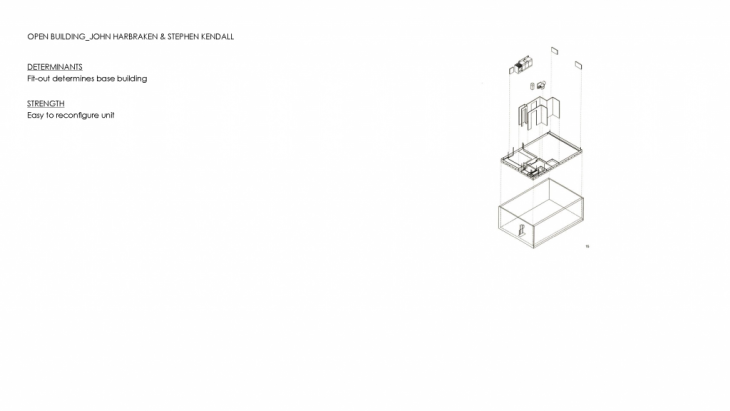
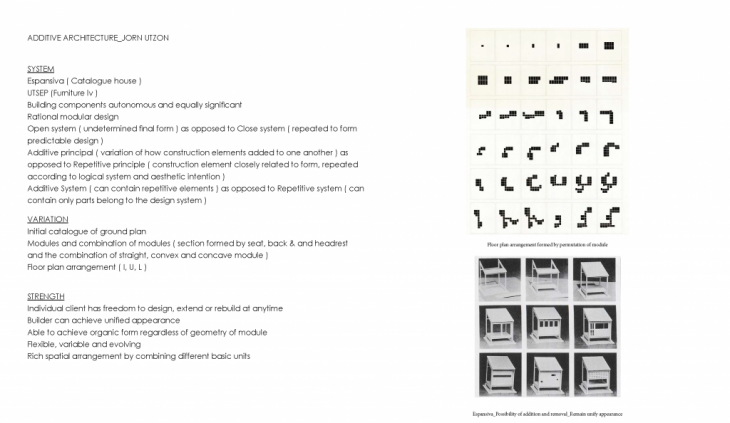
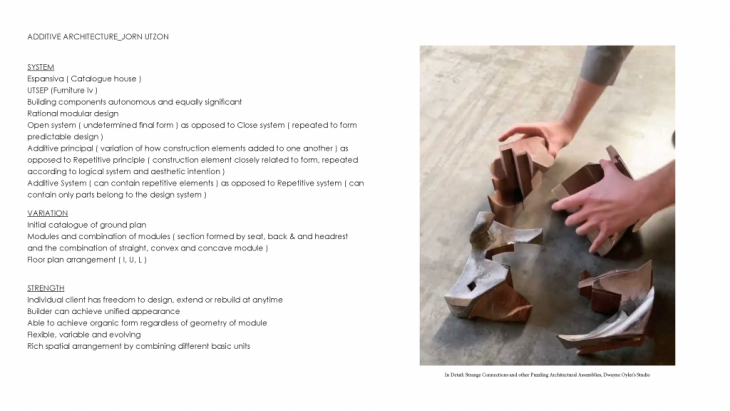
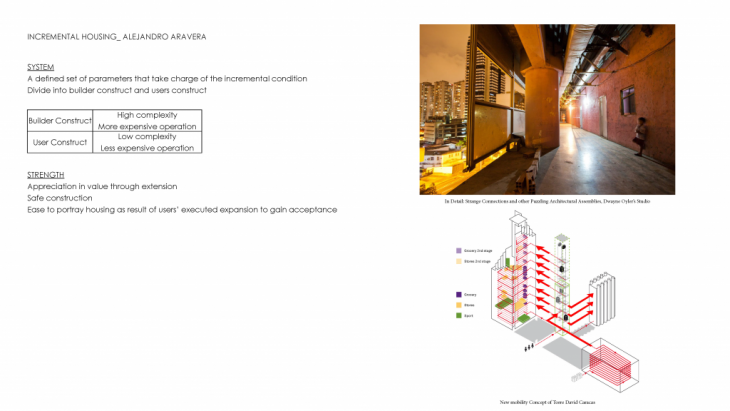
Comparison Between The Approach Of Plug-In And The Approach Of Fill-In
The operation plug-in and fill-in may be thought to be producing an indistinguishable visual consequence, yet, they are fundamentally different in nature for some reasons. Firstly, the plug-in system is designed in such a way for it to be compatible to meet a wide spectrum of users’ preference (Kendall, 2002) and hence it is a system for achieving undetermined form, while fill-in system is livable state having an incomplete expression to actively invite users to modify their living environment (Guillen, 2014), which intended to give inhabitants, who are not building professions, a clearly visible clue on the finished state they will be able to arrive at, and hence it is a system for achieving predictability (Aravena, Arteaga, Cerda, Oddó, & Torres, 2018). The determinants relationship between major and subordinate units in the system also distinguish the fill-in system from a plug-in system. In a plug-in system, the design of the fit-out, in which the responsibility is distributed to fit-out installers, has a direct relation on their marketing sense of what the consumers want. Fit-out result from such understanding has the power to determine the base building that they are plugged into. Therefore, the design of the interface and jointing are critical for the system to be effective (Kendall, 2002). On the other hand, the reality that sometimes a fill-in system is being implemented to an existing structure has imposed certain constraints that in practice the determinants relationship has to be the exact opposite to the plug-in system. Despite such constraints it could also imply that the fill-in system has a larger potential to morph into any form of porous structure. It is not until the emergence of incremental housing concept is changes being referred to as upgrade, which also make a clear contrast to the purpose of the plug-in system, which mainly is to create room for reconfiguration (Kendall, 2002). The heterogeneity of incremental housing, not only inheriting the fill-in concept but also an additive principle, reflects the desire of the architect to design a system that, like the Malay house, required a small capital to activate, and consequently grows in a pace that the users can control.
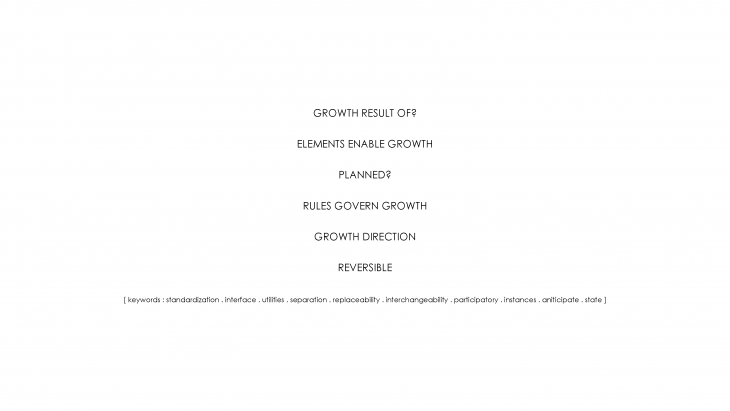
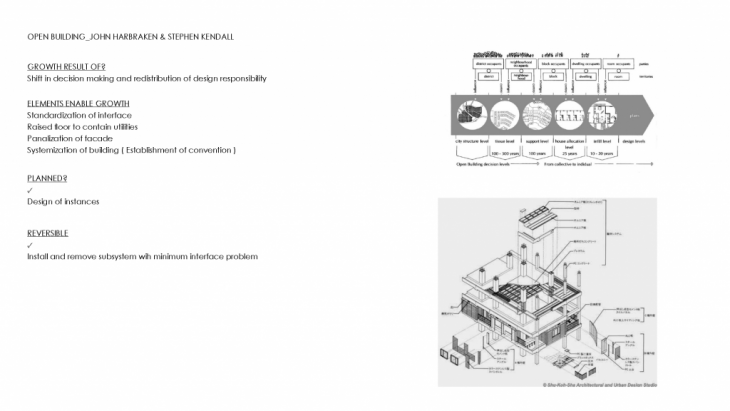
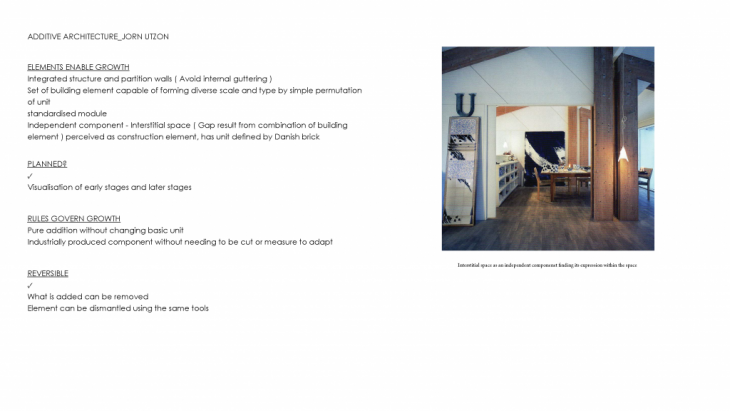
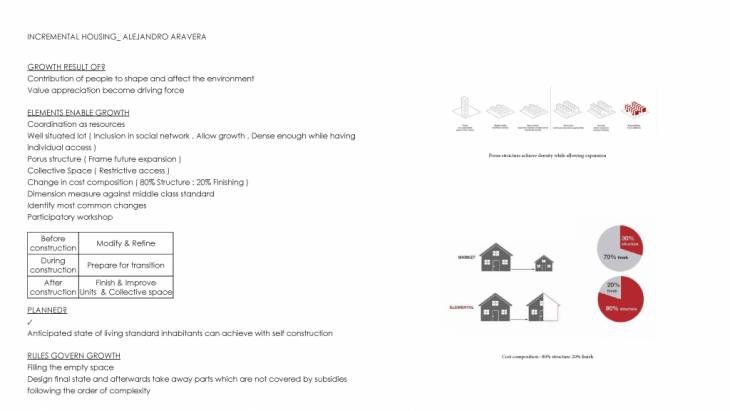
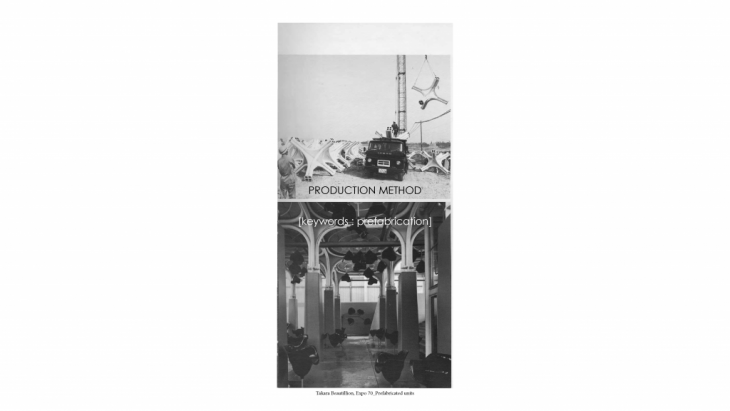
Reinterpretation Of Incremental And Participatory Concept In Post Natural Housing Context
To conclude, in the case of displacement induced by disaster, the limited amount of resources compared to the large demand for housing in haste has naturally point towards incremental housing as a solution. In the existing framework the post disaster housing is segregated rather than incremental since users cannot decide the pace of upgrading their house, most of the time they won’t even know when a more permanent housing is ready for them to move into. It also requires a huge sum of capital during the transition from one form of housing to another. Therefore, it is proposed that phasing of disaster housing settlement should form a continuum. Participatory in a post-disaster displacement context mainly contributes to creating a sense of belongings. Inhabitants of such housing are vulnerable in terms of carrying traumatic experience of the disaster and their uncertain future. Grieving cycle is a concept found in the psychiatric field and it is a subjective indicator, meaning that the timeframe it takes for people to go from one stage to the other is different for everyone. Settlement systems that could account for such differences should adapt to units that coexist in their different states. The segregation of existing post disaster housings is partly because the constituents that form the systems are mutually exclusive to each other. In order for the unit to grow, its constituents have to belong to the same set of components, in which the set could possibly expand in the future when resources are readily available. The challenge of having a unified set of constituents throughout the course of disaster reconstruction lies again on the scarcity of resources. Regular revision to find within the current system the fundamental irreducible expression is necessary for the incremental system to be implemented as early as possible in the aftermath of the disaster. Lastly, expanding while living is another concept introduced in the argument. The condition of housing at every state throughout its course of evolution should be liveable, and the method of unit expansion should not pose harm to health and safety to the inhabitant. To wrap up, the incremental aspect and the participatory aspect have found their validity in the framework of post natural disaster housing settlement through reinterpretation of their meaning.
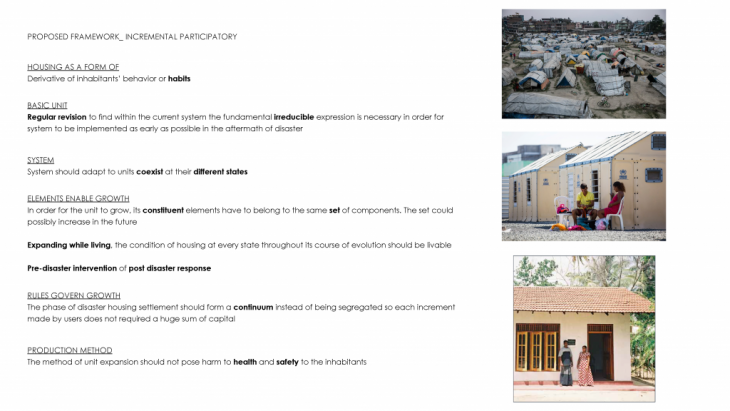
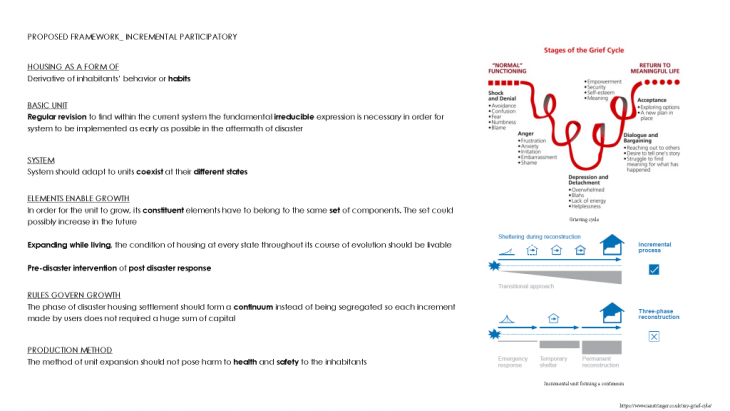
A Participatory Approach To Facilitate An Incremental Growth Of Post Natural-Disaster Housing At Both Unit And Settlement Level is a project of IAAC, Institute for Advanced Architecture of Catalonia developed in the Master of Advanced Architecture 2019/20 by
Students: Timothy Ka Kui Lam and Faculty: Manuel Gausa and Jordi Vivaldi